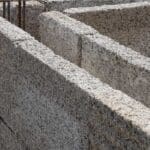
Hempcrete: What it is and How it’s Making Construction Greener
In the construction industry, everything is starting to look a little greener – the windows, the lights, the plumbing, and the heating and cooling systems. So it should come as no surprise that engineers have been dabbling in a more eco-friendly version of insulation too. It’s commonly known as hempcrete, and it’s changing the way our buildings retain temperature and conserve energy.
What is Hempcrete?
Hempcrete is an insulation alternative that mixes hemp fibers and binders that resemble concrete to serve as the protective envelope inside a building. It is a mix of hemp hurds and lime, but possibly also contains natural sand, pozzolans, and cement. Hemp is a key crop in Manitoba, and it is most commonly used there to produce oil and seed. Hemp is also commonly used to make fabric and paper.
Building experts have developed a method for mixing the leftover wood core with water and binders to form hempcrete. In recent years, hempcrete has been catching on as a building material in Europe, where hempcrete buildings stand ten stories tall. Today, it is also marketed under the names Canobiote, Isochanvre, and Canosmose.
How Hempcrete Works
The hemp core has a high silica content, allowing it to bind well with lime. This material is lightweight – about a seventh of the weight of actual concrete. Not only can hempcrete be used in the structure of buildings, but it also acts as insulating infill between frames. Loads are carried by internal wood stud framing, making it a popular option for low-rise construction.
Environmental Benefits of Hempcrete
Many eco-friendly builders praise hemp as a material because it’s a fast-growing crop and it can grow well in both tropical and temperate climates. It’s also considered to be an eco-friendly crop because it absorbs carbon dioxide as it grows. Hempcrete is considered to be a more eco-friendly material than traditional insulation, which is made of hydrofluorocarbons and can actually produce potent greenhouse gases.
Construction Benefits of Hempcrete
Based on research findings, hempcrete has the ability to manage moisture inside walls and store heat energy.
“Hempcrete is used as an environmental barrier for providing resistance to heat transfer and managing moisture of the building envelope,” said Kris J. Dick, an associate professor in the Department of Biosystems Engineering at the University of Manitoba in Winnipeg and director of Alternative Village, its construction research facility. “Engineers and architectural designers practicing in the field of nonconventional material applications have clearly indicated a need for more design data regarding hempcrete.”
Hempcrete Testing
To test the durability and longevity of hempcrete in modern buildings, engineers have developed testing methods to evaluate its safety and efficiency. Alternative Village’s Kris J. Dick conducted research within a 23.8-square meter to compare hempcrete to traditional insulation in terms of energy, thermal and moisture performance. The results of his study indicated that the hempcrete provided a stable temperature inside the wall and that temperatures were consistent throughout the wall.
To broaden its mass appeal in the industry, however, more development and testing are needed to improve hempcrete’s structural strength. Experts are also beginning to consider other hemp-like natural materials that could be utilized for alternative insulation purposes as well.



